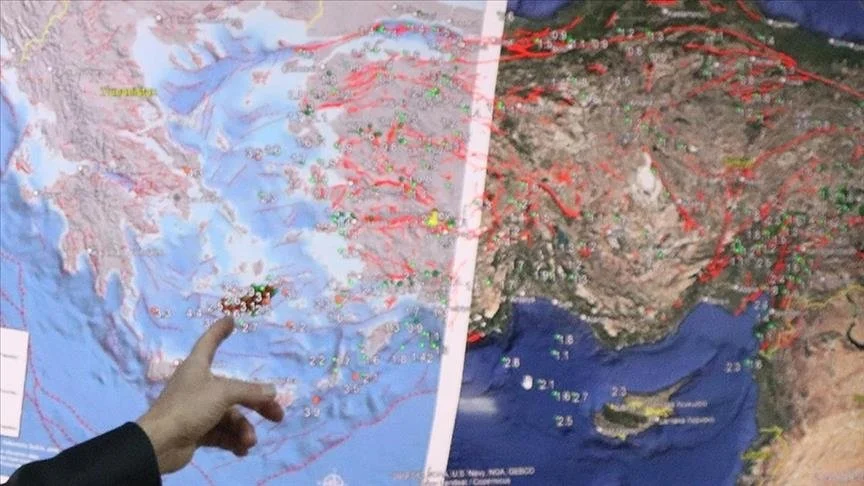A magnitude 6 earthquake remains a possible scenario, which could lead to the collapse of up to 300 buildings in the Santorini caldera.
The Ongoing Seismic Activity in Santorini
Renowned seismologist Efthymios Lekkas visited Santorini on Wednesday (February 19, 2025) to assess the seismic activity affecting the Cyclades islands. He met with the Local Operational Coordination Body of Civil Protection, established in response to the successive tremors shaking the region.
Accompanied by members of the Interdisciplinary Committee for Risk and Crisis Management of the National and Kapodistrian University of Athens (EKPA), Lekkas emphasized that the most probable scenario is a gradual de-escalation of the seismic activity. However, he acknowledged that an earthquake of around 6.0 on the Richter scale remains a potential outcome.
Potential Earthquake and Its Consequences
While a 6.0-magnitude earthquake or greater is considered an extreme scenario, it remains the second most likely possibility. Lekkas warned of the significant impact such an event could have on the island, with a 4% probability of 200 to 300 buildings collapsing in the Santorini caldera.
Volcanic Activity and Geological Shifts
Addressing concerns about volcanic activity, Lekkas reassured that the Kolumbo submarine volcano is not expected to erupt within the next 10,000 years. Furthermore, the possibility of a new volcano forming in the area is estimated to be at least 200,000 years away.
Geological surveys have also recorded significant ground displacement. The northern part of Santorini has shifted by 8 centimeters, while the southern part has moved by 4 centimeters. These movements, though notable, are evolving on a geological timescale and do not currently impact operational response measures.
Official Report and Preparedness Measures
On February 18, 2025, Lekkas, along with committee members Antonarakou and Evelpidou, met with the Local Operational Coordination Body of Civil Protection (TESOPP). The meeting aimed to enhance coordination among all emergency response teams on the island.
Representatives from various agencies, including the Special Disaster Response Unit (EMAK), the Technical Chamber of Greece (ETIK), the airport, the military, the coast guard, the fire department, the police, local government officials, and Member of Parliament Kafouros, participated in the discussions.
During the meeting, Lekkas outlined possible scenarios based on recommendations from the Seismic Risk Assessment and Mitigation Committee and the Greek Volcanic Arc Monitoring Committee. Key points included:
Most Likely Scenario: A gradual decline in seismic activity.
Alternative Scenario: A magnitude 6.0 earthquake or slightly stronger. In such a case, there is a 4% chance that 200–300 buildings in the caldera could collapse. Precautionary measures are in place to prevent access to high-risk areas and limit crowd gatherings.
Volcanic Activity: No immediate threat of eruption. Kolumbo is dormant, and discussions about new volcanic formations concern events that are at least 200,000 years away.
Geological Changes: Documented shifts of 8 cm in the north and 4 cm in the south. These changes do not currently affect emergency planning.
Additional Considerations
Other issues discussed during the meeting included:
School Closures: Although inspections showed no structural damage to school buildings, they will remain closed for the rest of the week for psychological reasons. Online classes will continue to ensure uninterrupted education.
Access Control Zones: The island has been divided into zones based on risk levels, with corresponding protective measures in place.
Landslide Concerns: Ongoing geological assessments will determine restricted access areas and necessary operational adjustments.
Evacuation and Crowd Control: Authorities are developing plans to manage evacuations and prevent overcrowding in specific locations.
Tsunami Possibility: Current data suggests that a potential tsunami would not exceed 3–4 meters in height. Emergency plans are in place for 7,000–8,000 individuals, with further adjustments planned ahead of the tourist season.
The Interdisciplinary Committee for Risk and Crisis Management of EKPA continues to closely monitor developments and collaborate with local authorities to ensure a swift and effective response to any emerging threats.









